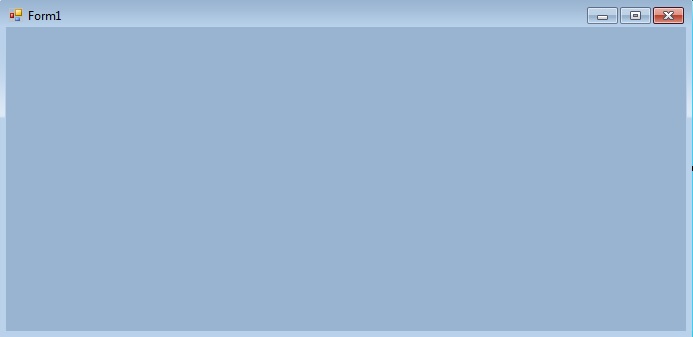How to set the CheckBox to Checked state in C#?
Last Updated :
27 Sep, 2021
The CheckBox control is the part of windows form which is used to take input from the user. Or in other words, CheckBox control allows us to select single or multiple elements from the given list. In CheckBox, you are allowed to set the state of your CheckBox to the Checked using the Checked Property of the CheckBox.
If the value of this property is true which means your checkbox in Checked state, otherwise, false. The default value of the Checked Property is false. When the value of the Checked Property is set to true, then for normal appearance, the CheckBox shows tick mark and for Button appearance, the control looks sunken. In Windows form, you can set this property in two different ways:
1. Design-Time: It is the simplest way to set the Checked property of a CheckBox using the following steps:
- Step 1: Create a windows form as shown in the below image:
Visual Studio -> File -> New -> Project -> WindowsFormApp

- Step 2: Drag the CheckBox control from the ToolBox and drop it on the windows form. You can place CheckBox anywhere on the windows form according to your need.

- Step 3: After drag and drop you will go to the properties of the CheckBox control to set the CheckBox to Checked state using Checked property.

Output:

2. Run-Time: It is a little bit trickier than the above method. In this method, you can set the Checked property of a CheckBox programmatically using the following syntax:
public bool Checked { get; set; }
Here, the value type of this property is System.Boolean. And if the value of the ThreeState is set to be true, then the Checked property returns true form Checked or Indeterminate CheckState. Following steps are used to set the Checked property of the CheckBox:
- Step 1: Create a checkbox using the CheckBox() constructor provided by the CheckBox class.
// Creating checkbox
CheckBox Mycheckbox = new CheckBox();
- Step 2: After creating CheckBox, set the Checked property of the CheckBox provided by the CheckBox class.
// Set the Checked property of the CheckBox
Mycheckbox.Checked = true;
- Step 3: And last add this checkbox control to form using Add() method.
// Add this checkbox to form
this.Controls.Add(Mycheckbox);
Example:
C#
using System;
using System.Collections.Generic;
using System.ComponentModel;
using System.Data;
using System.Drawing;
using System.Linq;
using System.Text;
using System.Threading.Tasks;
using System.Windows.Forms;
namespace WindowsFormsApp5 {
public partial class Form1 : Form {
public Form1()
{
InitializeComponent();
}
private void Form1_Load(object sender, EventArgs e)
{
Label l = new Label();
l.Text = "Select Gender:";
l.Location = new Point(233, 111);
this.Controls.Add(l);
CheckBox Mycheckbox = new CheckBox();
Mycheckbox.Height = 50;
Mycheckbox.Width = 100;
Mycheckbox.Location = new Point(229, 136);
Mycheckbox.Text = "Male";
Mycheckbox.Checked = true;
this.Controls.Add(Mycheckbox);
CheckBox Mycheckbox1 = new CheckBox();
Mycheckbox1.Height = 50;
Mycheckbox1.Width = 100;
Mycheckbox1.Location = new Point(230, 174);
Mycheckbox1.Text = "Female";
Mycheckbox1.Checked = false;
this.Controls.Add(Mycheckbox1);
}
}
}
|
Output:

Like Article
Suggest improvement
Share your thoughts in the comments
Please Login to comment...